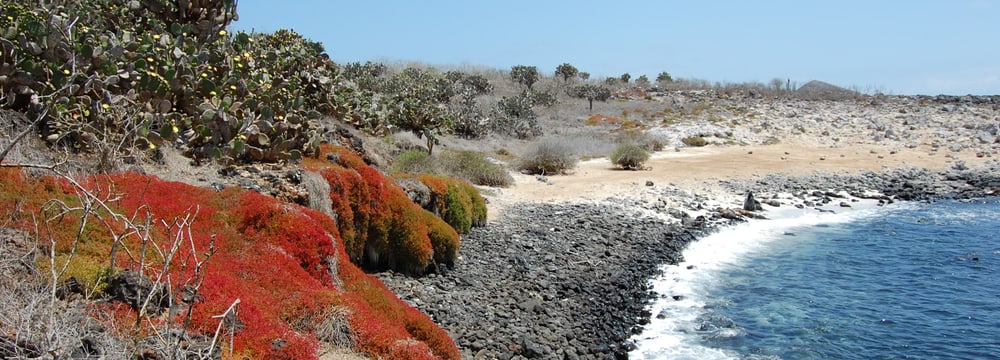
The Galapagos Islands
Geography
The Galápagos archipelago is of volcanic origin. It belongs to Ecuador and is located on the equator, 1000 km west of the South American mainland. Due to the geographical isolation, special flora and fauna were able to develop on the volcanic islands over millions of years. Galápagos giant tortoises, Galápagos fur seals, Flightless cormorants, Marine iguanas, Darwin's finches, and numerous plants such as Scalesia trees can only be found in Galápagos. The relatively cool and nutrient-rich seawater also allows for extraordinary biodiversity around the archipelago. If these habitats cannot be preserved, numerous endemic animal and plant species will disappear forever.
History
The Galápagos Islands were discovered in 1535 by the Spanish bishop Tomás de Berlanga. They became famous 300 years later through Charles Darwin. His evolution theory was largely based on observations made during his five-week stay on the archipelago.
In the centuries following the discovery, the islands served as hideouts and moorings for pirates, whalers, and fishermen. These brought domestic animals - goats, pigs, cats - and plants such as guava, citrus, bamboo, quinine, and avocado trees. Rats and ants were introduced. The alien species multiplied rapidly and caused great damage. They still threaten the existence of many native plants and animals.
In 1934, the Ecuadorian government passed the first laws to protect species threatened with extinction.
UNESCO World Heritage Site
In 1959, after IUCN/UNESCO expeditions had documented the still alarming conditions, the International Charles Darwin Foundation was founded, which maintains a research station on Santa Cruz Island. At the same time, the Ecuadorian government recognized the value of the islands and designated 97% of the land area as a national park. The remaining area is allowed to be used for agriculture.
Since 1979, the islands have been on the UNESCO list of the World Natural Heritage of Humanity. The Galápagos Marine Reserve, which with an area of 130,000 km2 was the second largest marine reserve on Earth after the coral reef in Australia, was added to this list in 2001 (Today, the marine reserve is 33rd in the ranking).
In 2007, the natural heritage was classified as "endangered" by UNESCO. In July 2010, this classification was revoked, so Galápagos currently holds the status of a "World Natural Heritage Site of Humanity" again.
Tourism and nature conservation
The reason for UNESCO's action in 2007 was that the islands are no longer just a dream destination for researchers of nature; tourists are also visiting them more and more frequently. For example, the number of days spent there by cruise ship passengers has risen by 150 percent in the past 15 years. Accordingly, traffic between the islands is also booming. Settlement by immigrants increased sharply and new animal and plant species were introduced.
Charles Darwin Research Station
The Charles Darwin Research Station on the Galápagos island of Santa Cruz is doing important work to preserve this unique hot spot of nature. Its first director was from Switzerland, and Swiss scientists have been working on the islands up to the present day. The Association Friends of the Galápagos Islands (Switzerland) was founded to support the work of the Charles Darwin Research Station as well as other institutions - always with the aim to protect and preserve the unique flora and fauna of the islands.